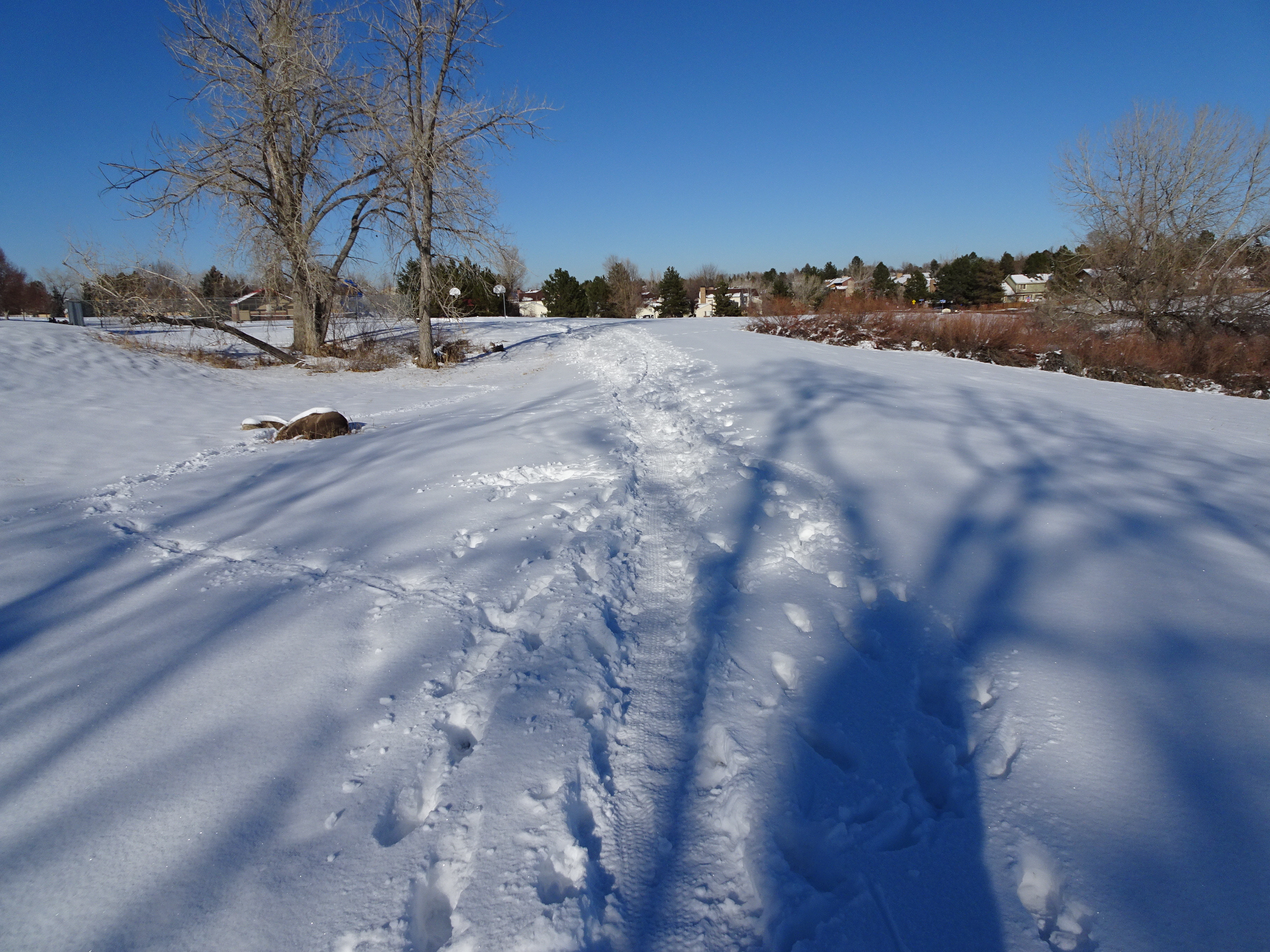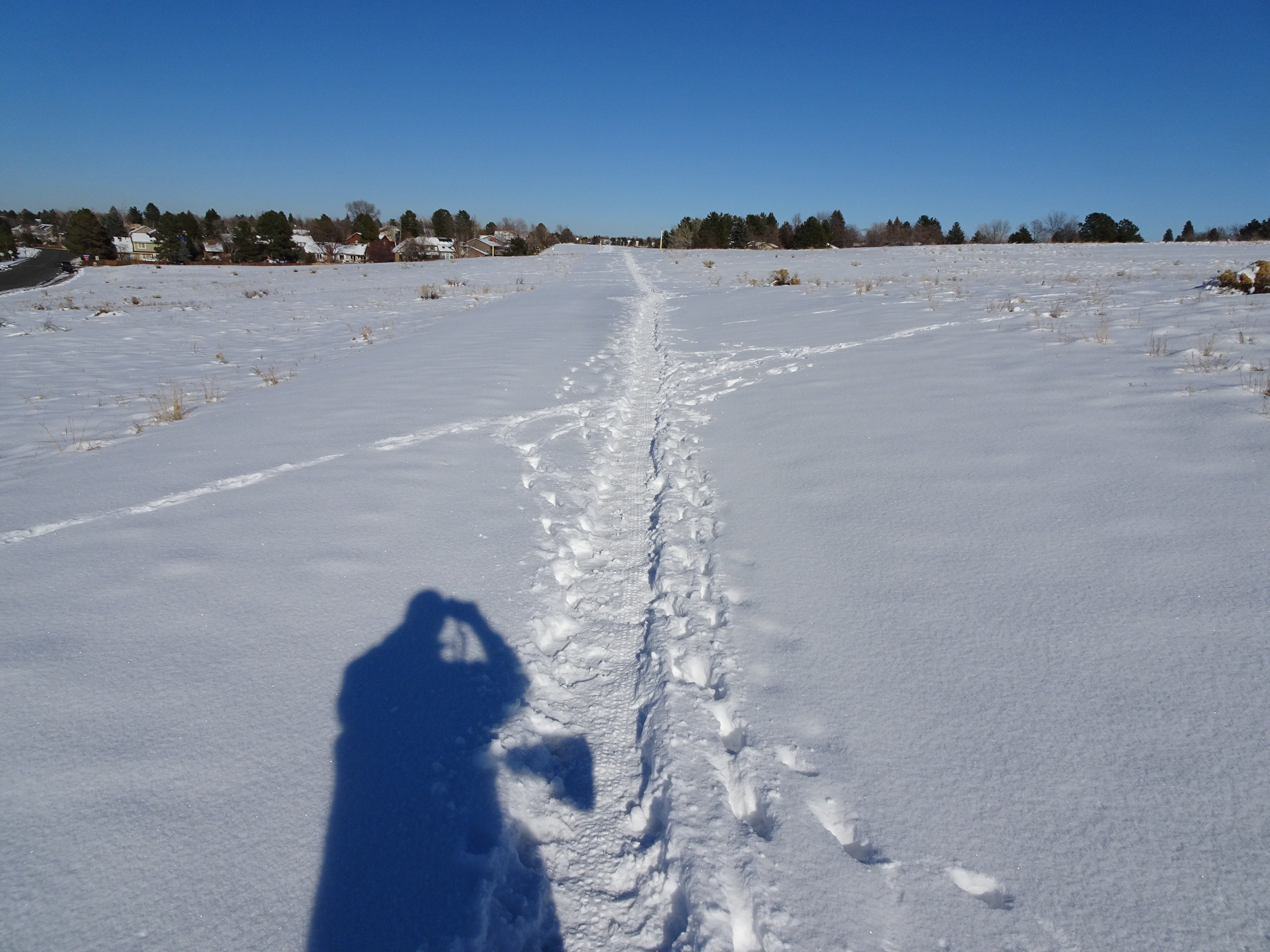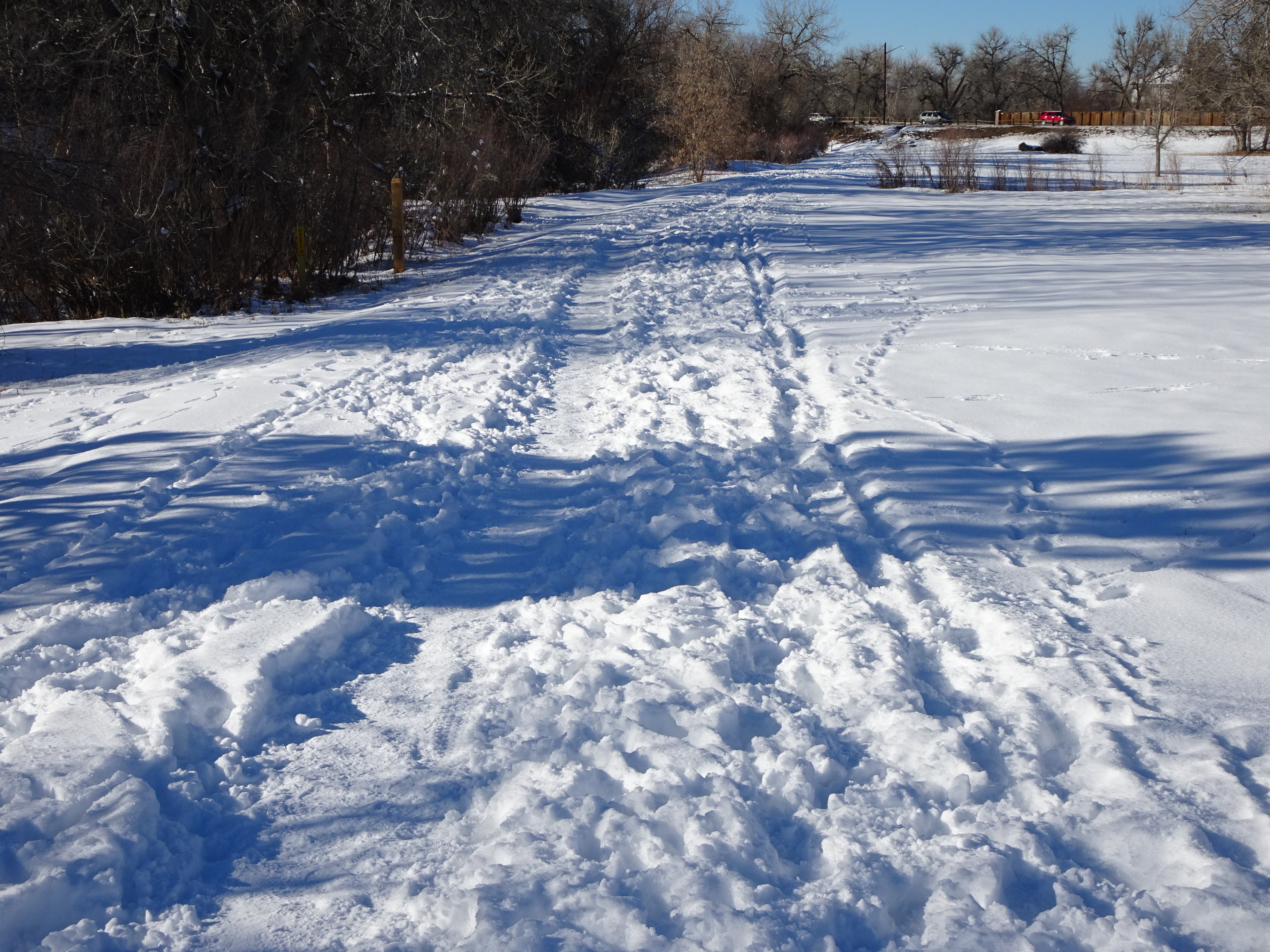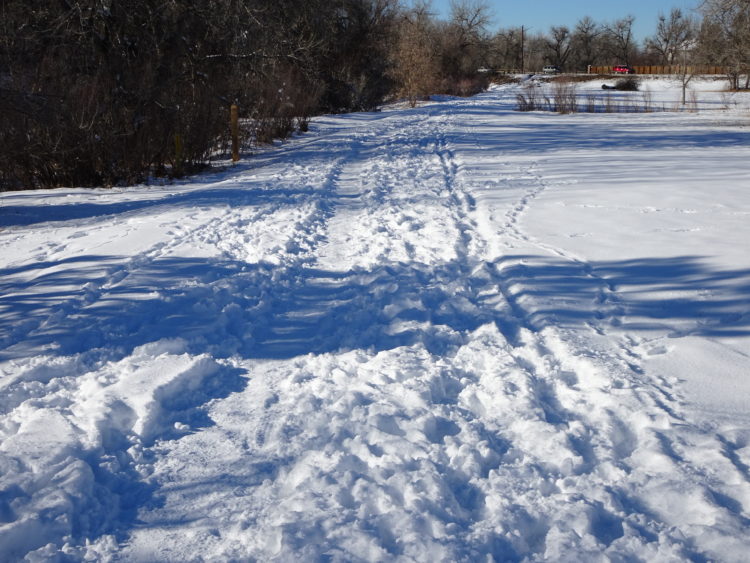Pros: Trails are empty of bikes except for you of course. If sunny, then great scenery and not too cold. If you enjoy skiing, then you will enjoy getting outside for the fresh cold air like I do.
Cons: With heavy snow and cold weather, you deal with ‘chop’. Which is an uneven trail surface caused by people walking. Chop is a nuisance resulting in a bumpy ride.
With heavy snow, you have to rely on experience to keep upright and not bog down in poor traction. I’ve heard of new riders who are quickly disillusioned by snow bike riding because they figure the bike can ride readily over any quantity of snow. But there are a number of pitfalls you can avoid if you experience it, or see my list below.
Snow riding Tips on Fat(Winter Bike):
1) Have studded tires, or a helmet. The studs grip ice and provide dramatic reassurance you will not simply fall flat on glaze ice. I can ride remarkably aggressive with the studded tires.
2) Keep extremities warm but not hot. Only experience will show you how to dress when riding in the cold. But essential equipment are Poagies or handlebar mitts. I have lightweight mitts and layer gloves based on temperature. Ear muffs, really warm shoes and socks. The body core temp is controlled more by your exercise level. If your cold, pedal harder!
3) Ride the fall line always. Most sliding is seen on gentle grades that are ultra slippery due to pedaling pressure causing loss of traction. Studs help but ride the snow as if ice is everywhere.
3b) Avoid or be aware of obstacles under fresh snow, especially previous snows. Your biggest threat is riding 2″ of fresh on top of a rutted and choppy trail. The ruts will grab you wheel and you will spill. Stay of the foot path trail if you can see it.
4) Ride for enjoyment and not speed. Until you have your groove on with a given trail, plan on going slow, and expending a lot of energy during your ride. I ride half the distance I normally ride, but I am twice as tired and usually sweating somewhat at the end.
5) Sweating must be managed and is a problem when snowing where air is very humid. In Colorado so much sweat disappears normally because of humidity from 5-30%. When dew point climbs to 80’s or higher then sweating can be managed by layers. Start the ride wearing what makes sense, but plan on removing a layer once the core body heat gets in gear.
6) Have goggles on seriously snowy days because the whipping snow on your head and eyes will halt you entirely. Regular glasses will fog up very quickly and be useless. Without eye protection, heavy snow will halt you quickly. If it is windy and cold and snowing, I’m sitting on my couch and not on the bike.
7) Plan on having a spill. Think in terms of a ski day, you will fall but you will be moving slowly, and the landing may be snowy soft. Usually.
Every time I ride in snow, I make herb tea, and take a thermos tea along. Plan on stopping half way with some nut snacks and herb tea. Take some pictures. Enjoy the ride.




